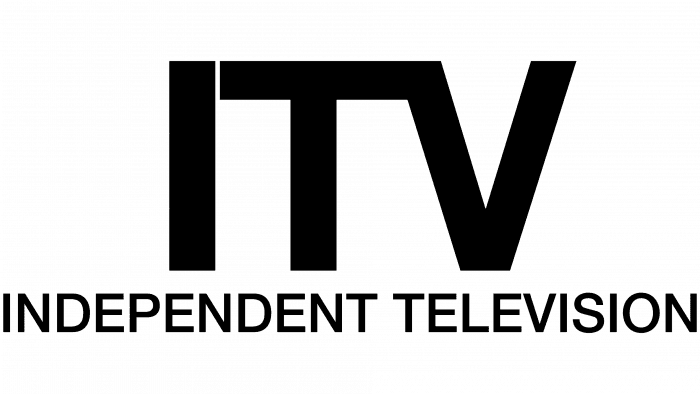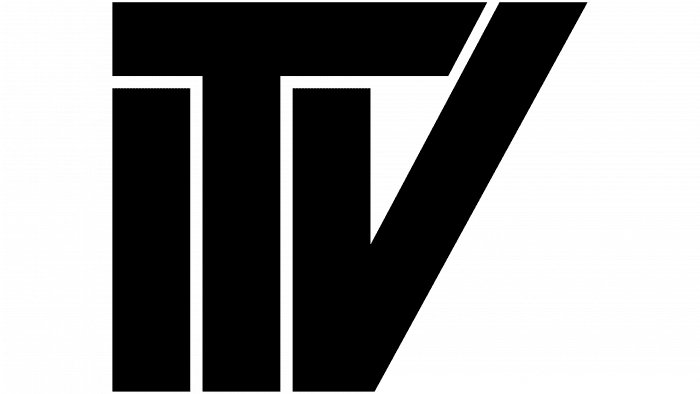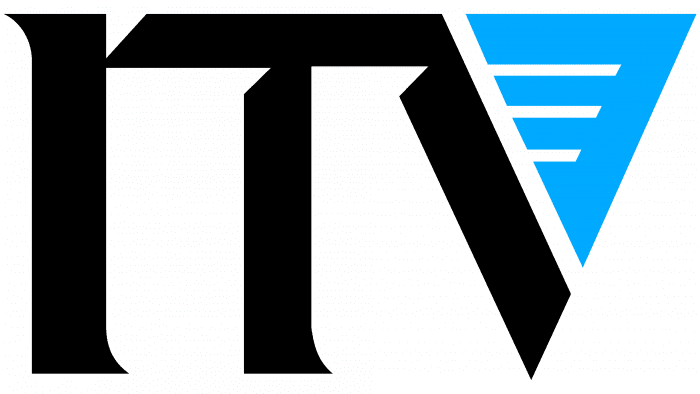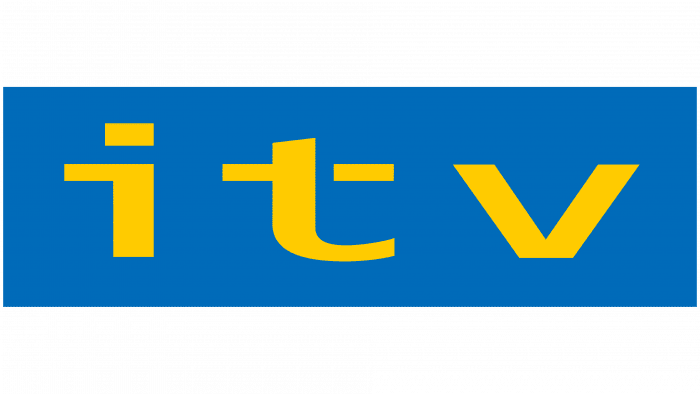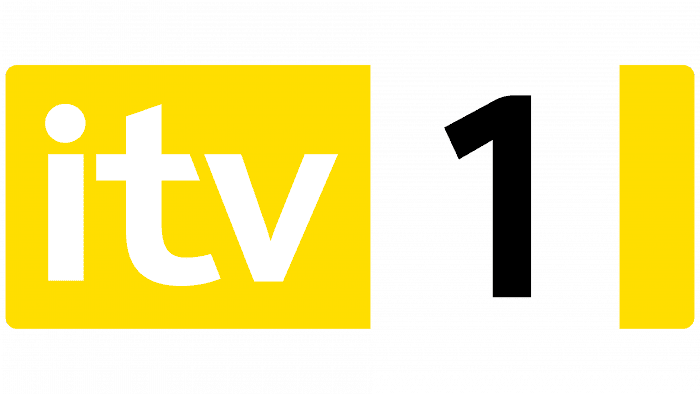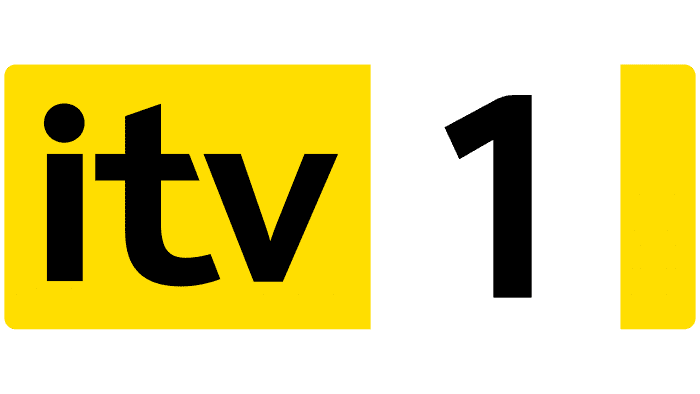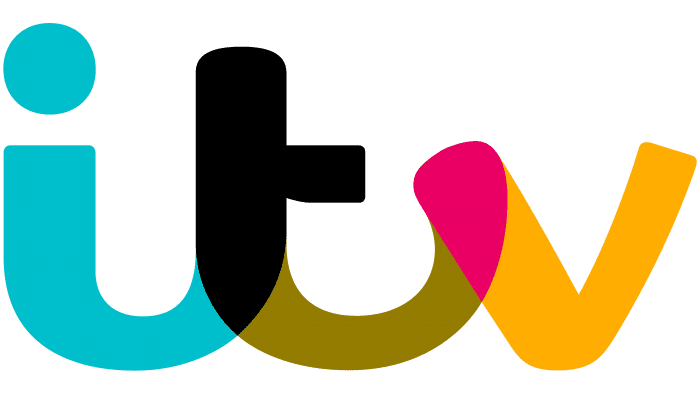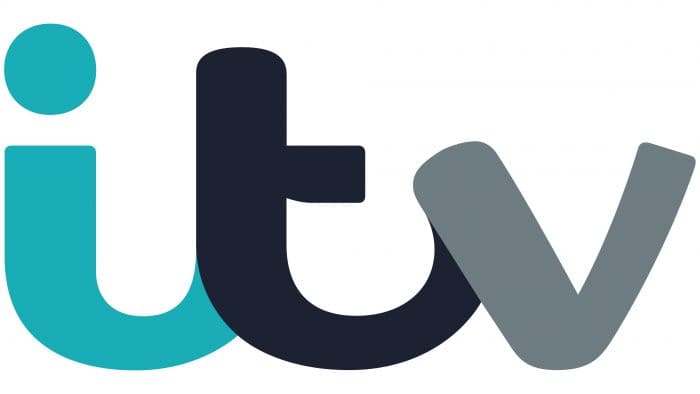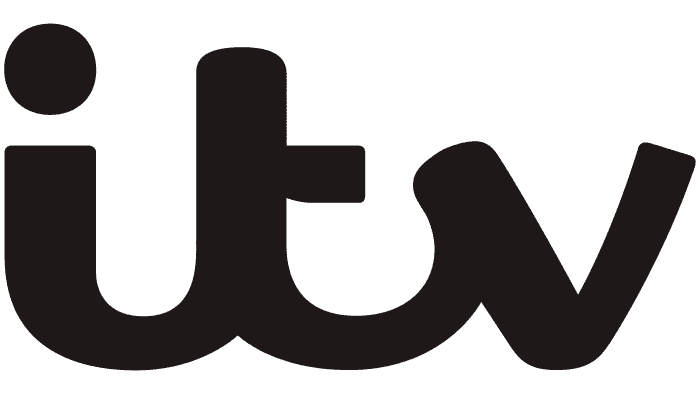Brevity is the soul of wit. The ITV logo fully confirms this truth. The emblem demonstrates simplicity and conciseness but without losing its meaning. This approach on TV helps to keep the attention of the audience, and the visual sign provides memorability.
ITV: Brand overview
| Founded: | 22 September 1955 |
| Founder: | ITV plc, STV Group |
| Headquarters: | London, United Kingdom |
| Website: | itv.com |
Meaning and History
Regional channels finally merged into one company in 2002, when the ITV1 brand appeared. They had broadcast under different names and most often used their decals instead of a common logo. But the management decided that it was necessary to unify the stations’ visual identity and several times turned to specialists to create a universal design.
What is ITV?
ITV stands for Independent Television, one of the largest media companies in the United Kingdom and its eponymous television network, launched in 1955. It broadcasts various sports programs, movies, TV series, documentaries, entertainment shows, news, and much more. ITV Studios produce some programs.
1955 – 1963
When the channel group first appeared, its name was slightly longer than it is now. It consisted of two words, “INDEPENDENT TELEVISION,” which found a place in a simple black text logo. The only notable detail was the serif typeface.
1963 – 1971
In 1963, there was a transition from the full name to the abbreviated one. Both variants were used in the logo: “ITV” was on the top, and “INDEPENDENT TELEVISION” was written in one line at the bottom. The serifs have disappeared from the letters.
1966 – 1973
The company finally got rid of its full name and changed the font. “I,” “T,” and “V” became elongated, and the distance between them increased slightly.
1973 – 1986
From 1973 to 1986, a monogram appeared in some marketing materials. In it, “I” and “V” were under the “T,” forming a harmonious figure.
1975 – 1980
Many viewers will remember the unusual ITV logo with striped letters. This is the merit of the creators of the hypnotizing font Aki Lines.
1980 – 1993
In commercials, there was a modified version of the emblem, in which the inscription was of the normal size and with small intervals between the characters.
1989 – 1998
In 1989, the English Markell Pockett design studio designed a more complex logo for the broadcaster. She added sharp asymmetrical serifs and triangular notches to the letters and complemented the lettering with a mysterious blue shape that replaced the entire right side of the “V.” As you know, the channels refused to use a common icon and opposed unification.
1998 – 2001
At the turn of the 20th and 21st centuries, ITV turned to English & Pockett to improve its identity. Part of the revamped image is an emblem with yellow lowercase letters on a blue background. The registered change was supposed to attract a young and advanced audience.
2001 – 2002
In 2001, the company revised its logo to match its new name: ITV1. The designers added a blue number “1” in a yellow rectangle after the letters.
2002 – 2004
The icon has been softened with color transitions. In addition to the gradient, a thin, unevenly colored border appeared, making the emblem three-dimensional. This design is by Bruce Dunlop and Associates.
2004 – 2006
The brand’s visual identity is minimalist again, with the 2D version of the 2001-2002 emblem. In it, each symbol was located separately, in its quadrangle.
2006
In January 2006, Red Bee Media changed ITV1’s image beyond recognition. The TV company owners tried to unite all the franchises under one logo, which was to attract new viewers. To expand the audience, they made the image more attractive. So the blue and yellow era of ITV1 ended, and the black and yellow era began. A sunny color dominated the icon: it served as a background for white sans serif letters.
2006 – 2010
Specialists from three companies worked on the emblem’s new look at once: ITV Creative, Pleix, and Blink Productions. All they did was change the color of the lettering to black.
2010 – 2013
The same companies as last time added a dark gradient at the bottom of the image. An original graphic technique made the logo three-dimensional.
2013 – 2018
In 2013, the modern era began in the history of the television corporation. She again shortened her name to ITV and removed the “1” from the logo. Moreover, its distinctive mark began to look completely new: rectangles, gradients, and monochrome letters disappeared. Instead, stylish five-color lettering came in, and the font was changed to a rounded, imitating handwriting. For each movie, TV series, or show, the branding’s color scheme changed depending on the theme.
2019 – today
The logo changed from five colors to three colors. The font remains the same as before: rounded sans serif letters connected.
ITV: Interesting Facts
ITV has been a big part of TV in the UK since it started on September 22, 1955. It was the first network there to show commercials and offered a new choice besides the BBC.
- Beginning: ITV was the first to challenge the BBC by showing ads and giving viewers another option.
- Local Focus: Unlike the BBC, ITV started as many local TV stations. Each one made shows that suited their area’s interests. Although fewer stations are now, this local touch is still a key part of ITV.
- Popular Shows: ITV is known for hit shows like “Coronation Street,” the longest-running TV soap opera, “The X Factor,” “Downton Abbey,” and “Britain’s Got Talent.” These shows have won hearts in the UK and abroad.
- News: ITV News competes with BBC News, offering national and local stories. People value local news.
- Technology: ITV was the first in the UK to broadcast in color in 1969 and now offers HD and an on-demand service called ITV Hub, letting people watch shows online.
- Sports: ITV has covered major sports events, such as the FIFA World Cup and the Rugby World Cup. It’s known for its sports coverage both in the UK and internationally.
- Regulations: As the UK’s first commercial TV network, ITV helped shape TV regulation, ensuring quality and fairness in its programs.
- ITV Studios: ITV doesn’t just broadcast shows; it also makes them. ITV Studios creates content for ITV and other networks around the world.
- Doing Good: ITV uses its platform to support social causes, like mental health campaigns, showing it’s dedicated to making a positive impact.
Since 1955, ITV has been a key player in the UK’s TV scene, always evolving with technology and viewer tastes. It’s more than just a TV network; it’s a part of the UK’s cultural fabric.
Font and Colors
The broadcaster uses one logo for all channels. The last two redesigns have allowed her to ditch the formal style in favor of playful elements. Remarkably, the design was done by ITV specialists with a little help from freelancers. Professional agencies were not involved in the process.
The developers have made it so that the name was written in asymmetric lowercase letters. No fonts were used: the style “I,” “t,” and “v” does not look like any standard lettering.
The logo, like a chameleon, changes colors depending on the background. The basic version features a discreet color scheme: a combination of blue, dark blue, and gray.
ITV color codes
| Light Sea Green | Hex color: | #18adb7 |
|---|---|---|
| RGB: | 24 173 183 | |
| CMYK: | 87 5 0 28 | |
| Pantone: | PMS 7466 C |
| Midnight Express | Hex color: | #1d2232 |
|---|---|---|
| RGB: | 29 34 50 | |
| CMYK: | 42 32 0 80 | |
| Pantone: | PMS 296 C |
| Hoki | Hex color: | #6e7d81 |
|---|---|---|
| RGB: | 110 125 129 | |
| CMYK: | 15 3 0 49 | |
| Pantone: | PMS 444 C |



